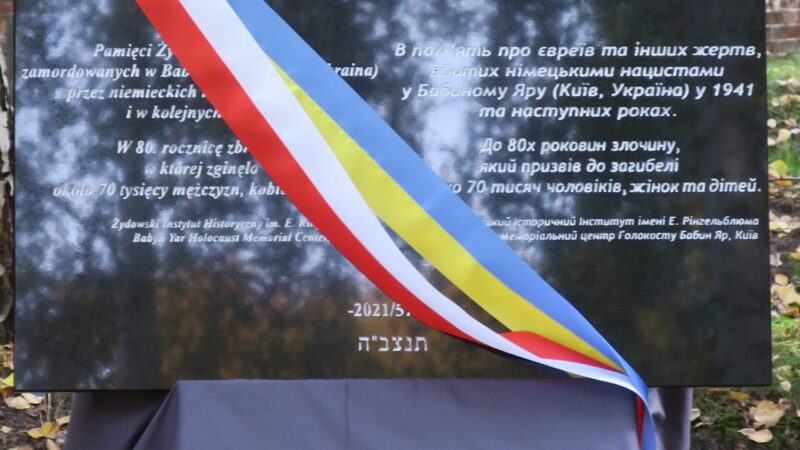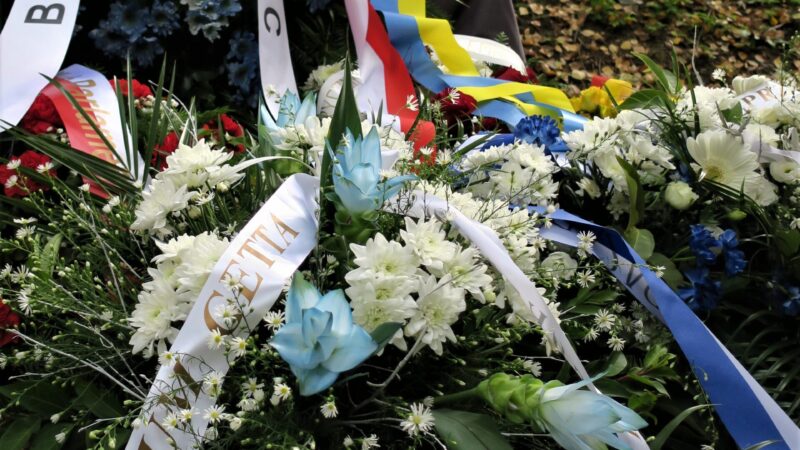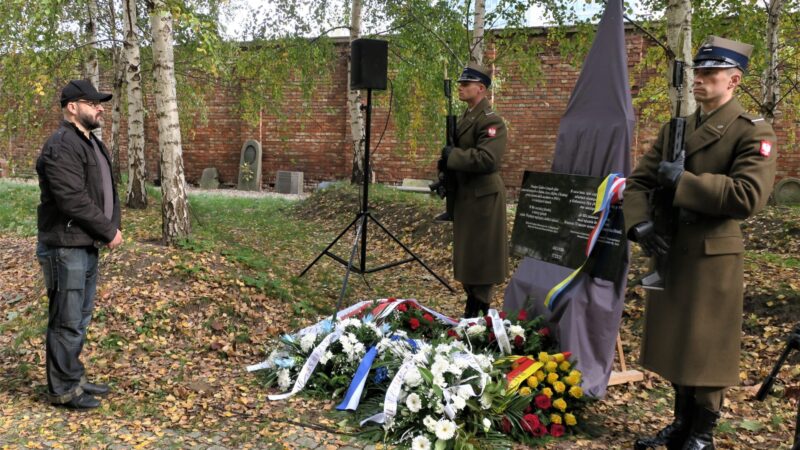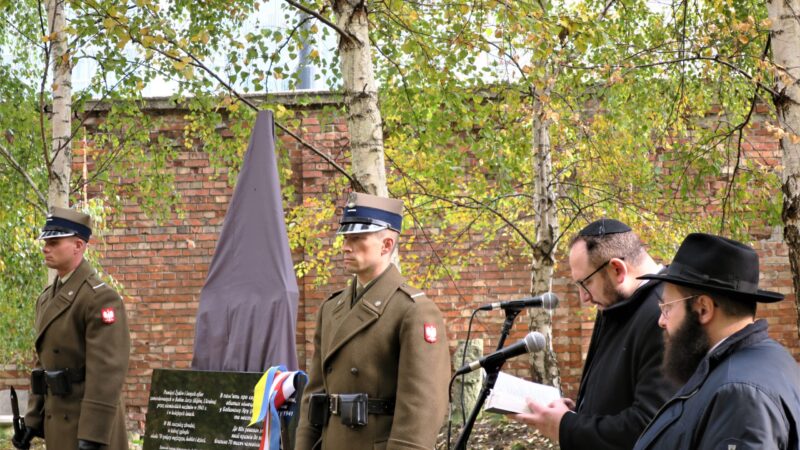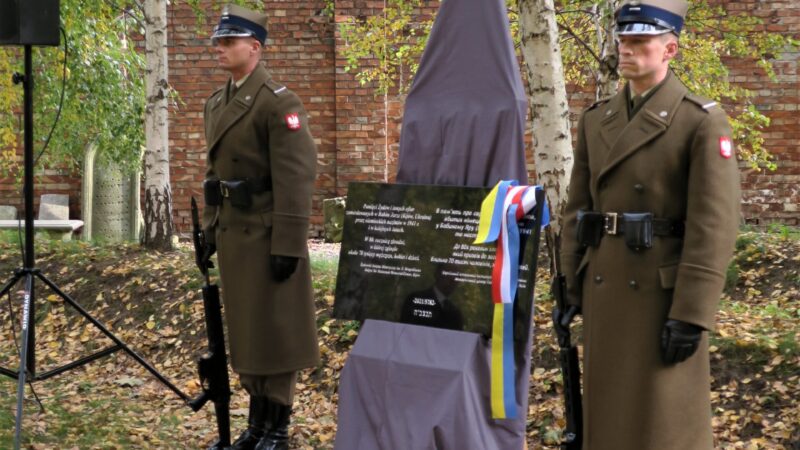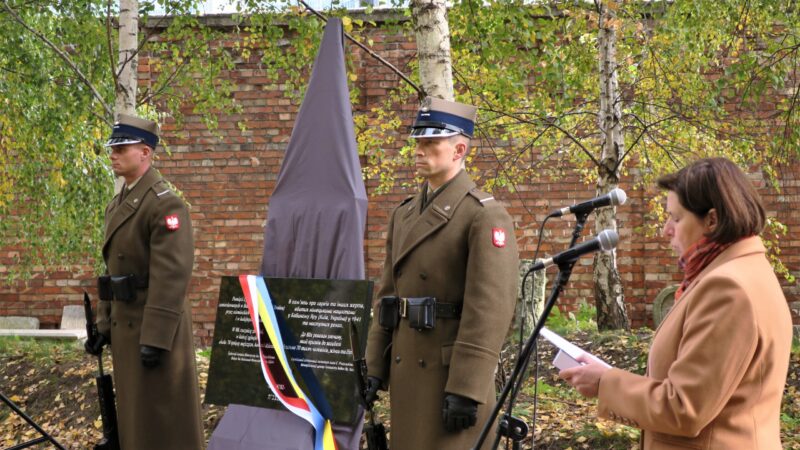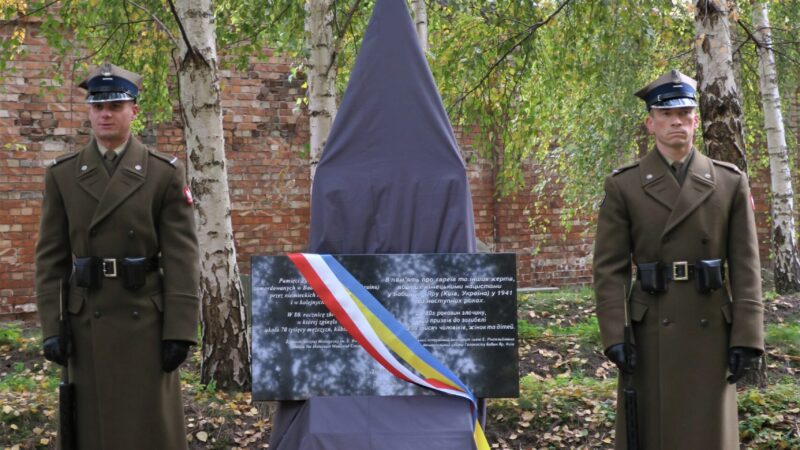The Unveiling of the Memorial Plaque for the Victims of the Events in Babi Yar
On October 20, at the initiative of the Jewish Historical Institute and the Bayn Yar Holocaust Memorial Center, a memorial plaque was unveiled at the Jewish Cemetery in Warsaw, commemorating the victims of the events at Babi Yar in 1941.
Babi Yar went down in history as one of the bloodiest chapters of the Holocaust. On September 29, 1941, 10 days after the occupation of Kiev by German troops, the Jewish population was ordered to gather on the outskirts of the city with money, valuables and warm clothing. Believing that they would be “taken to a safe place,” the Kiev Jews obeyed the order and walked in columns to the specified location. There, in the Babi Yar ravine near Kiev, the largest mass execution during the World War II took place. In just a few days, until October 3, the Germans murdered about 34,000 people, the vast majority of them the Jewish community of Kiev. But this was not the end of the tragic history of this place. It is estimated that by mid-1943, another 70-120,000 people were executed there, including Poles, Russians, Belarusians, Roma and Sinti, Soviet prisoners of war, Communists, and patients of psychiatric hospitals.
It was a long time before the events at Babi Yar were properly commemorated – the anti-Semitic Soviet authorities decided to fill in the ravine. After the collapse of the Soviet Union, the situation gradually began to change. Starting in 1990, Jewish organizations began awarding the “Righteous of Babi Yar” medal to people who saved Kyiv’s Jews. A synagogue and several monuments were erected near the site of the massacre, including the Menorah Monument and the Monument to the Child Victims. On the 75th anniversary of the Babiy Yar massacre, a plan to build the Bajn Yar Holocaust Memorial Center was announced.
On October 20, at the initiative of the Jewish Historical Institute and the Bayn Yar Holocaust Memorial Center, a memorial plaque to the victims of the events at Babi Yar in 1941 was unveiled at the Jewish Cemetery in Warsaw. The Warsaw Ghetto Museum was represented by Dr. Paweł Freus from the Science and Research Department.


